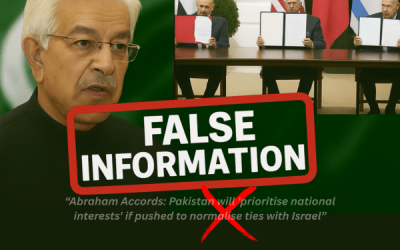The story of Zul-Qarnain stands as one of the most fascinating narratives in the Qur’an, stirring curiosity across centuries. Introduced in Surah Al-Kahf, this mysterious figure is described as a righteous king who journeyed to the ends of the Earth and constructed a massive barrier to contain a destructive force known as Gog and Magog. But who was he? And what makes his legacy so enduring in the minds of believers and historians alike?
The recent video, “Zul-Qarnain – The Mysterious King, The Wall of Gog & Magog, and Lessons for Today”, offers a powerful retelling of this Quranic episode, blending Islamic theology, historical research, and prophetic symbolism to unravel this ancient mystery.
If you’re intrigued by Islamic traditions or curious about the Islamic history behind apocalyptic prophecies, this tale offers a powerful lens into a deeply rooted legacy.
Want to dive deeper? Watch the full video right here and explore this enduring mystery for yourself.
Who Was Zul-Qarnain?
Mentioned only briefly in Surah Al-Kahf, Zul-Qarnain is often interpreted as more than just a historical ruler—he is portrayed as a just and God-guided leader entrusted with immense responsibility. Scholars have debated his real-world identity for centuries, suggesting figures like Alexander the Great or Cyrus the Great. While there is no consensus, the characteristics outlined in the Qur’an clearly depict a righteous king who believed in divine accountability and acted in service to humanity.
The Wall of Zul-Qarnain: A Barrier Against Chaos
One of the most intriguing elements of the story is the Wall of Zul-Qarnain—a mighty barrier built to shield people from the corruption of Gog and Magog (known in Arabic as Yajuj and Majuj). These destructive tribes were known for causing widespread mischief, and the wall was constructed as a temporary but powerful measure to contain them.
Modern historians and archaeologists have searched for the physical location of this barrier, yet no definitive evidence has been found. Some point to ancient structures in Central Asia, while others believe it remains hidden, part of an end-times prophecy that has yet to fully unfold.
[Read up on the recent update on the sudden policy shift, the U.S. Department of Education has suspended student loan forgiveness under the Income-Based Repayment (IBR) plan, sparking confusion and concern among borrowers nationwide.]
Spiritual Lessons from a Historical Enigma
While the identity of Zul-Qarnain and the exact site of the wall may remain unknown, the spiritual lessons are timeless. His commitment to justice, humility before divine will, and determination to protect the oppressed offer a model of leadership sorely needed today. In an age of rising moral confusion, stories like these from Quranic stories remind us that faith, strength, and service are not mutually exclusive.
The Enduring Relevance of Zul-Qarnain’s Story
As the world confronts geopolitical unrest and cultural shifts, the story of Zul-Qarnain and Gog and Magog gains renewed relevance. Whether viewed through the lens of prophecy, history, or moral symbolism, this narrative urges us to reflect on the nature of leadership, the fragility of peace, and the spiritual battles that lie ahead.
[Don’t miss our recent blog on the interesting topic “Is Asim Munir the Next President of Pakistan? A Look at the Recent Developments”]





